CRG Research Report - © 2025, Camaro Research Group
1967-69 Camaro Hoods and Associated Parts
Primary Authors - Troy Criscillis, Ed Bertrand, and Bryon Miller
Reviewed by the CRG
Last Edit: 19-Jun-2025
Previous Edits:
Original Release: 03-Nov-2024
|
- Introduction
- Flat Hoods
- SS Hoods
- Special Ducted (Cowl) Hoods
- SS Hood Louvers
- Hood Dates
- Insulation and clips
- Other Associated Parts
- Acknowledgements
Introduction
There were three types of hoods used on first generation Camaros: the standard flat hood,
the SS hood, and the ZL2 Special Ducted hood (also known as cowl induction or cowl hood).
This report will break down the hoods by type and visual differences, showing the revisions
that took place over the 3 years. It will also discuss the different SS hood inserts and
other associated parts, such as hood pad clips and rubber adjustment bumper stops.
Flat Hoods
Externally, the 1967-1969 flat hoods are the same. The standard flat hood used on all 1967
and 1968 Camaros was part number 3886617. This hood was used on all 6 cylinder and V8 models,
except the 1967 and 1968 SS cars. The 1969 flat hood was part number 3938617, used on all
6 cylinder and most V8 models.
The inner structure of the flat hoods have some differences. When the inner structure was modified for clearance of the SS 396 air cleaner on SS hoods, the same structure was then used on later 1967 flat hoods. This structure then continued for 1968 hoods. There does not seem to have been a part number change for this modification. Very late in the 1968 model year and for the 1969 model year there were additional changes. The 1969 hoods have “tabs” on the ribs that run from the center towards the back corners and a hood hinge alignment hole was added (shown below in the SS hood section). This seems to be the reason for the part
number change, since the hood insulation pad would be slightly different. There is a note in the GM parts books "relocate hood insulation hole located near hood hinge". Later
in 1969, stiffening pyramids were added near the front edge. The other hood structures received this modification in the same timeframe. There did not seem to be a part number change for the
addition of these pyramids.
Original hoods have two circular stops approximately 1.750" in diameter which are welded
to the right front and left front corners of the hood. They line up with the adjustable
hood stops which are mounted on the core support. Notice that there are three small circular
spot-weld indentations inside these stops. All original GM hoods have these. Most reproduction
hoods do not have the three spot-welded indentations, they are smooth. The ones that do have the spot welds are not as pronounced as the originals.
Reproduction hoods are also very sharp on the front edge of the hood. This is noticable
whenever you lift a reproduction hood. GM hoods have a more refined and smoother
front edge than the reproductions.
All Z28's in 1967 and 1968 used the flat hood. For 1969, most Z28's received the flat hood,
but the cowl hood was an option.
Flat hood exterior.
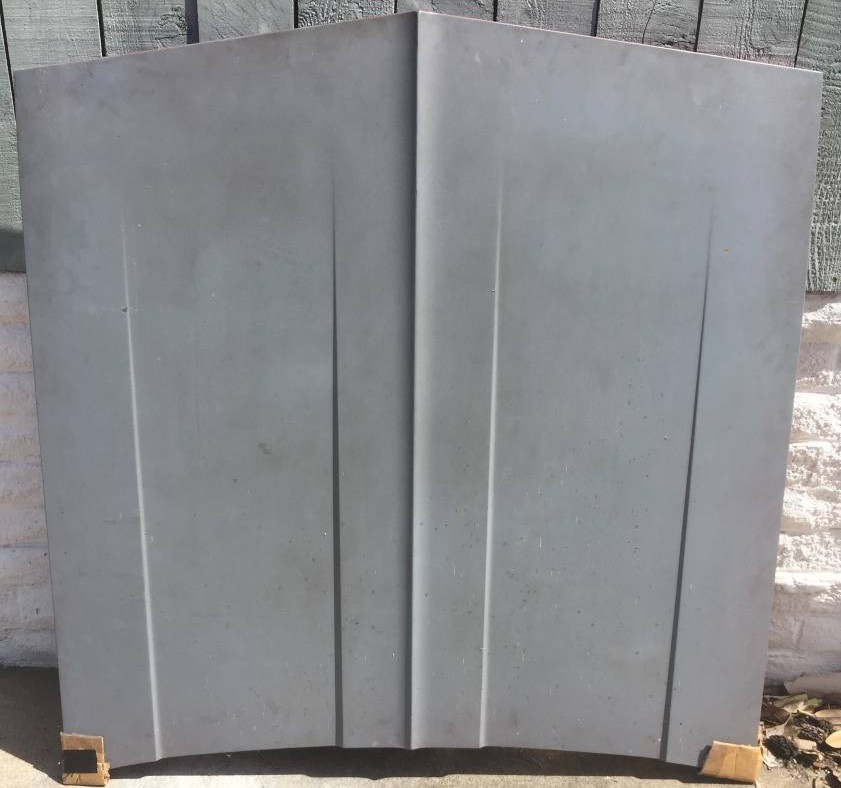
|
|
Second design flat hood underside.
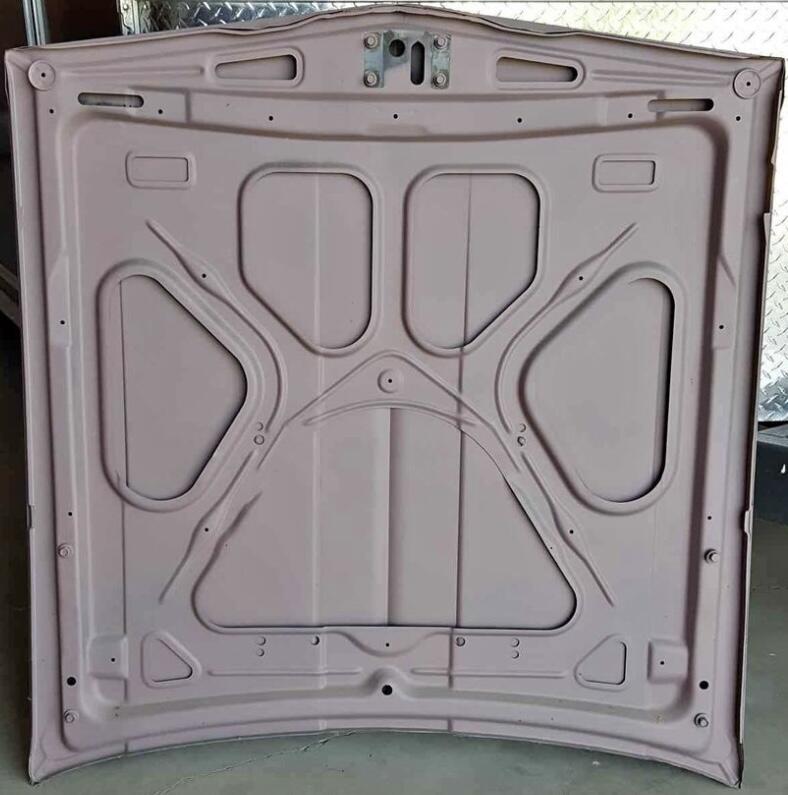
|
|
Most Z28s used the flat hood.
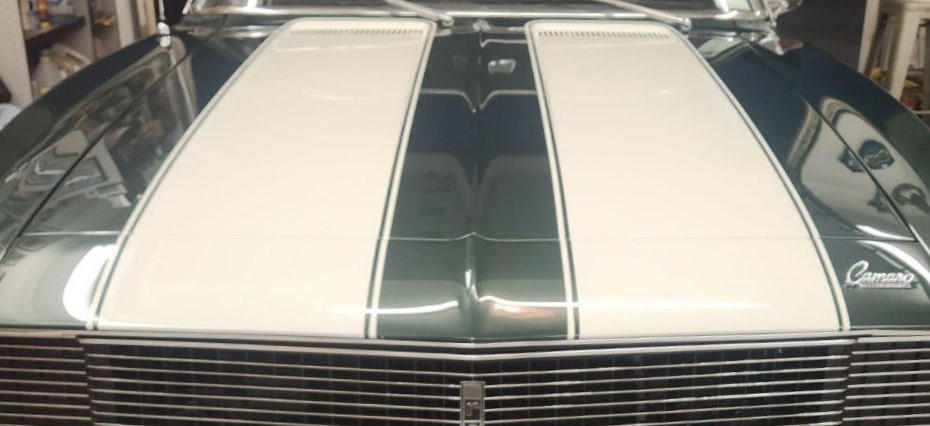
|
|
|
1968 hood latch bolts.
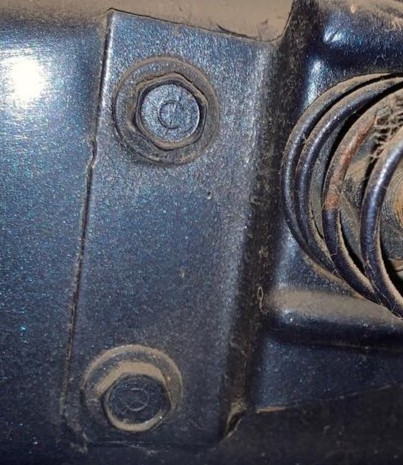
|
|
Front corner stop.
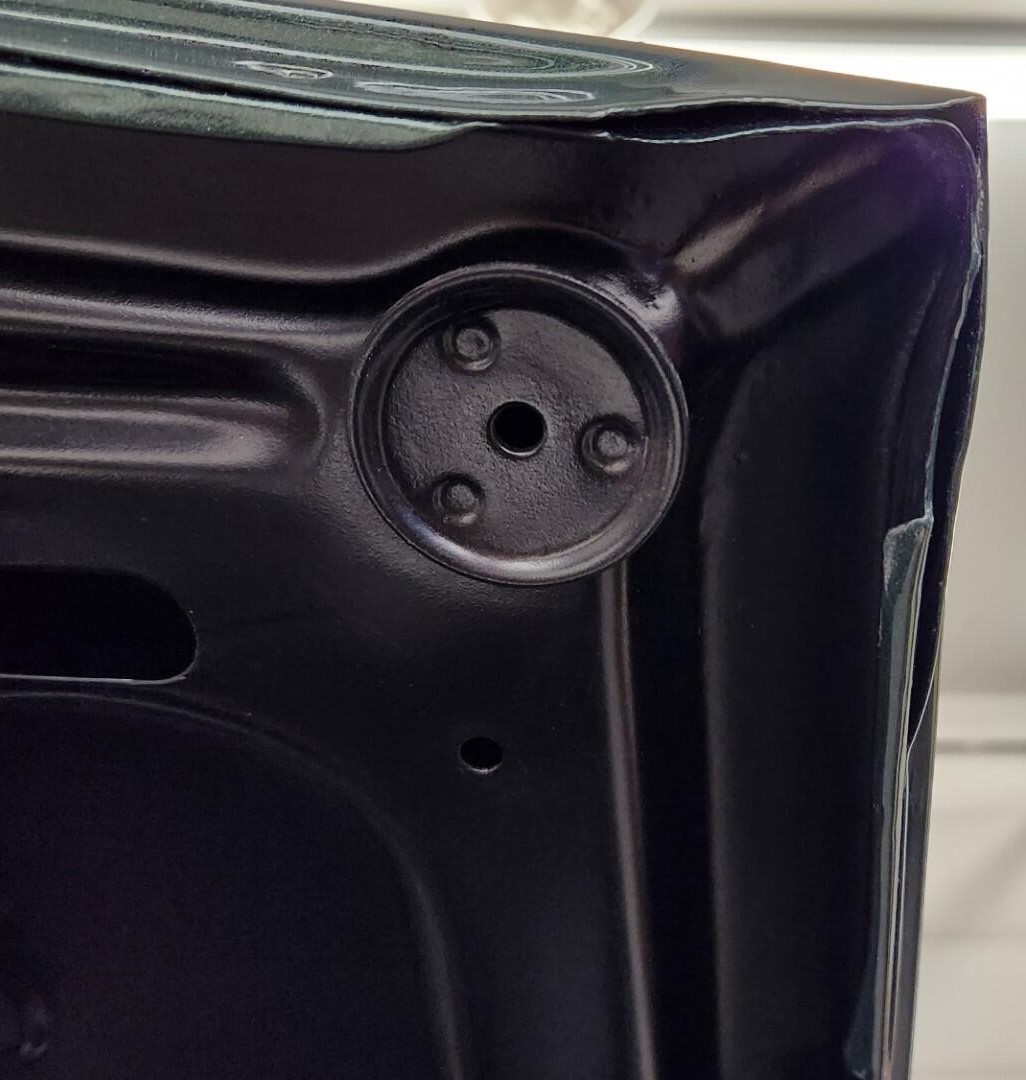
|
|
1967 early flat hood in assembly line photo.
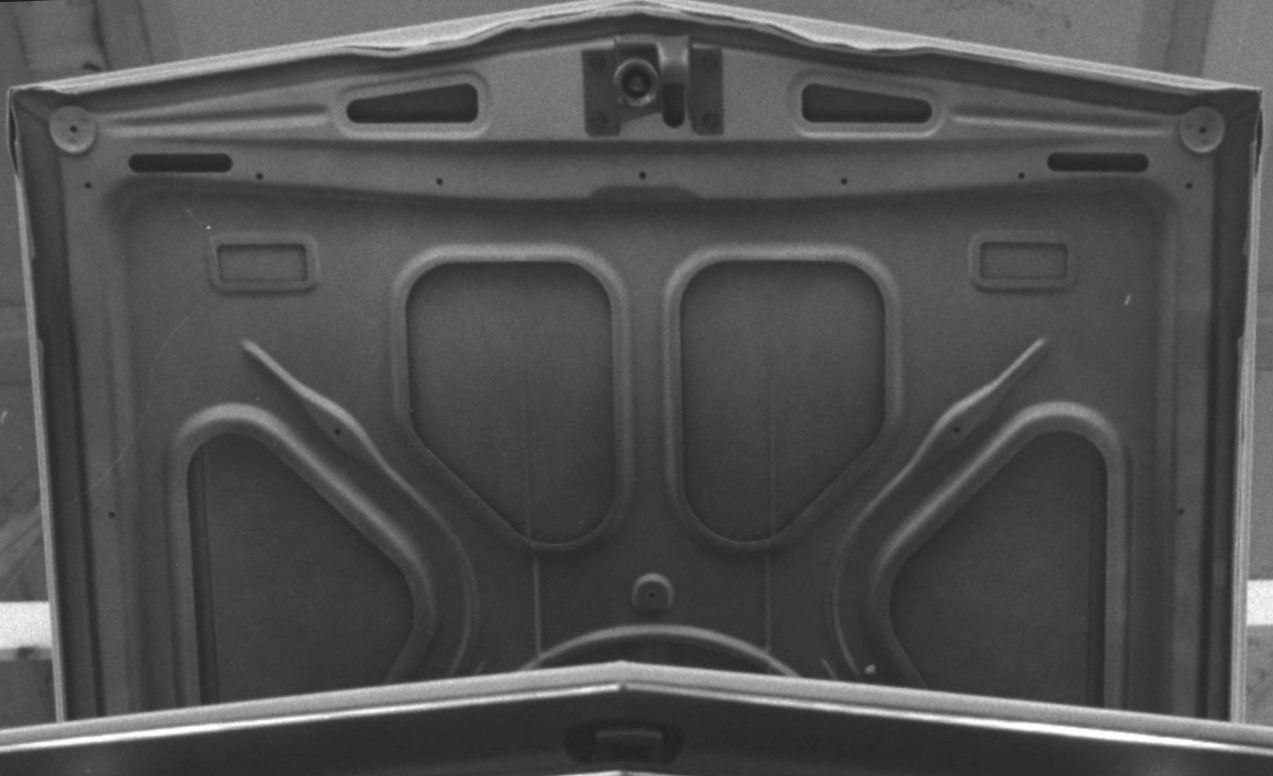
|
|
Later design 1969 NOS flat hood.
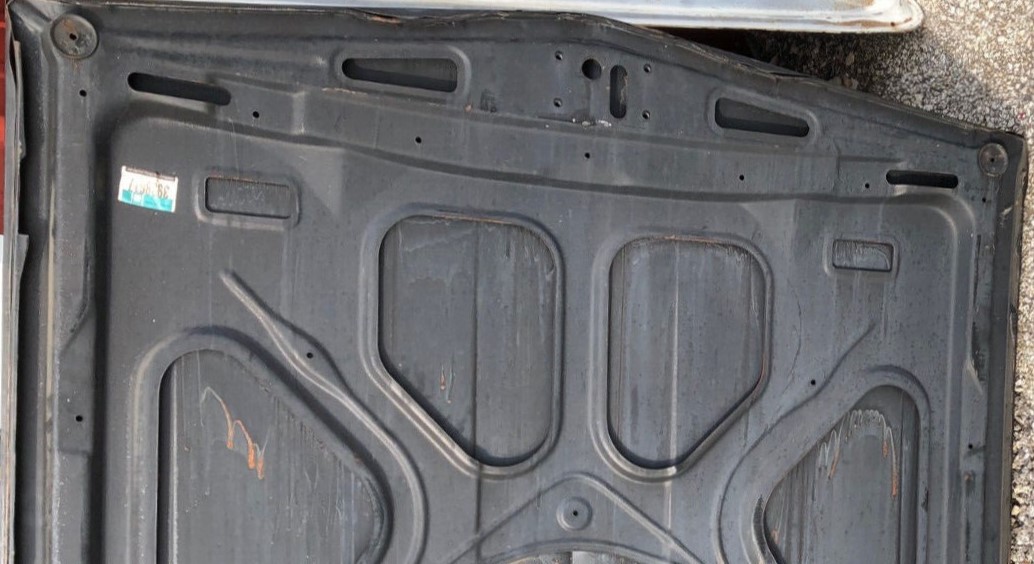
|
|
SS Hoods
While all SS hoods appear the same, and all will interchange, there are
differences between the years.
|
|
1967 SS hood.
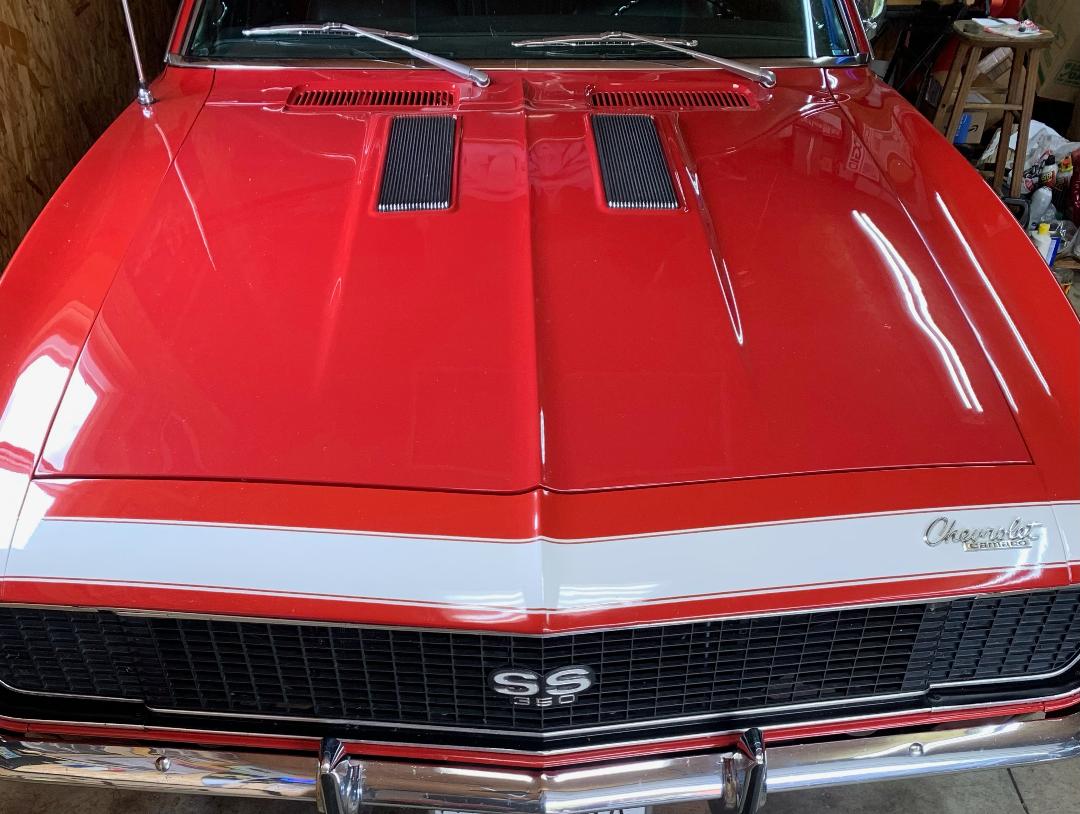
|
|
1969 SS hood.
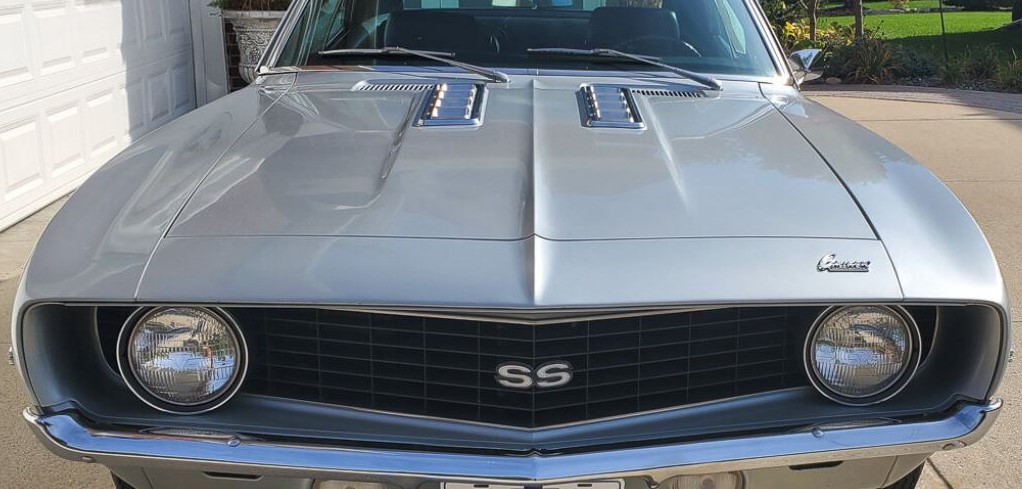
|
|
At the start of the 1967 model year, Camaros equipped with the SS package came with the L48
350 engine. These used the first design of the SS hood, part number 3898129. Later in the
year, the 396 engine became available with the SS package. The understructure of the hood
had to be modified; the center portion of the understructure was redesigned to fit the
SS396 air cleaner location. The second version of the SS hood was part number 3909158.
It was used for both the SS350 and SS396 cars.
The 1967 SS hoods do not have drain holes, they are not needed due to the louver design.
1st design 1967 SS hood underside.
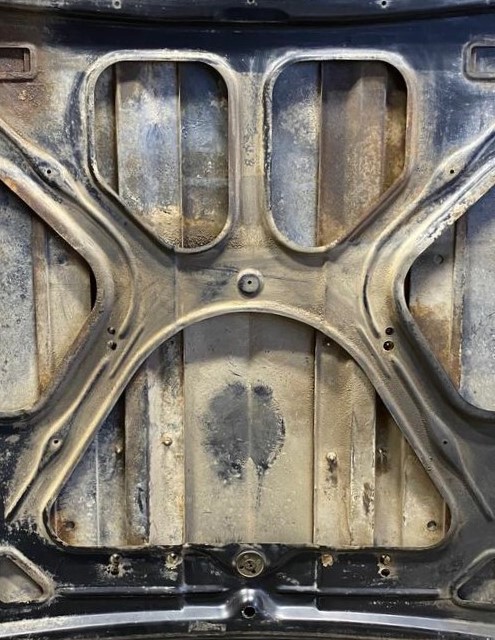
|
|
2nd design 1967 SS hood underside.
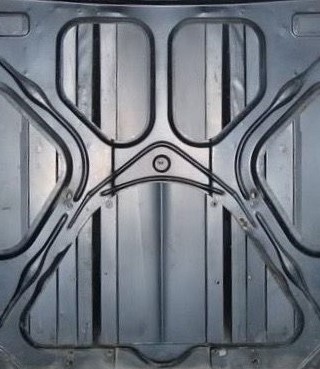
|
|
1969 SS hood underside with alignment hole.
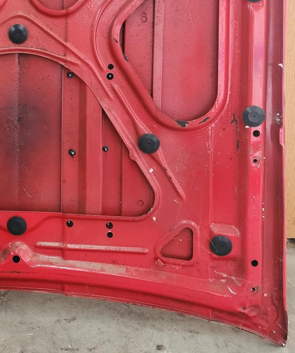
|
|
In 1968, both the 350 and 396 equipped cars used the SS hood, part number 3919102.
This revised hood included holes for water drainage, because of the louver design change.
Note the drain holes, circled in red below.
1967 SS hood louver area.
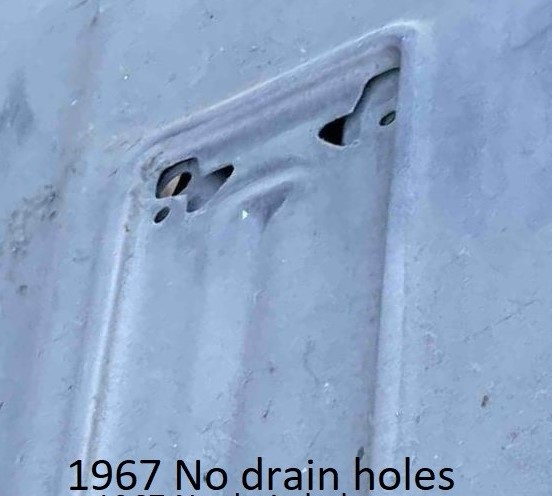
|
|
1968-1969 SS hood louver area.
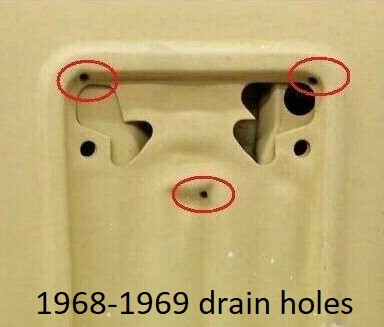
|
|
1968-1969 drain tubes.
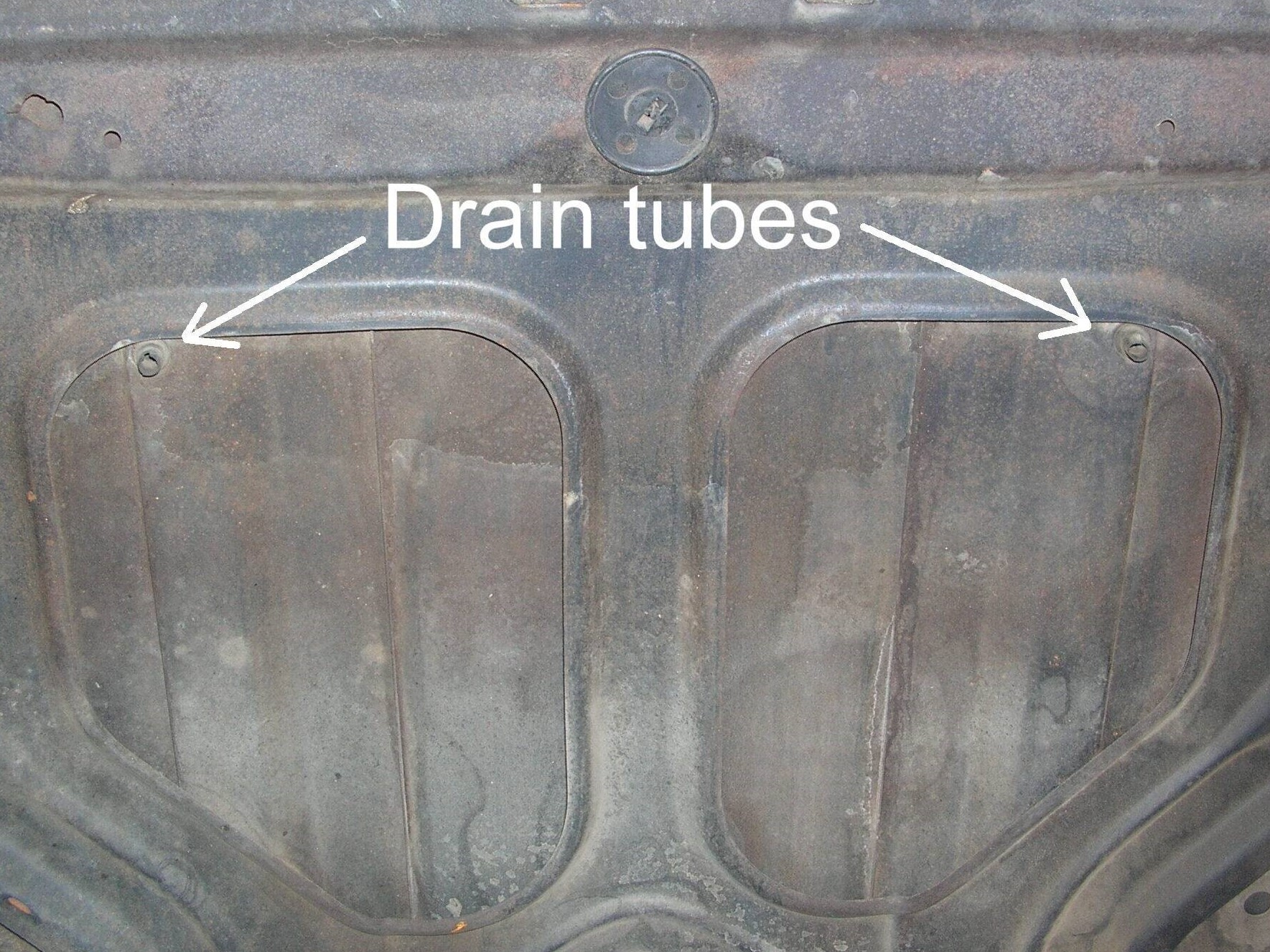
|
|
The inner structure of the SS hood is the same as the inner structure of the flat hood.
There are minor underside structure differences between hoods in 1967 and 1968 compared
to 1969. The 1969 hoods have “tabs” on the ribs that run from the the center towards the back
corners - 1967 and 1968 hoods don't have these tabs. In late May 1968, a hood hinge alignment hole
was added to hoods. This carried over through the 1969 model year. The late 1968 model year and
1969 model year SS hood was part number 3938619.
67-68 hood without "tab" or alignment hole.
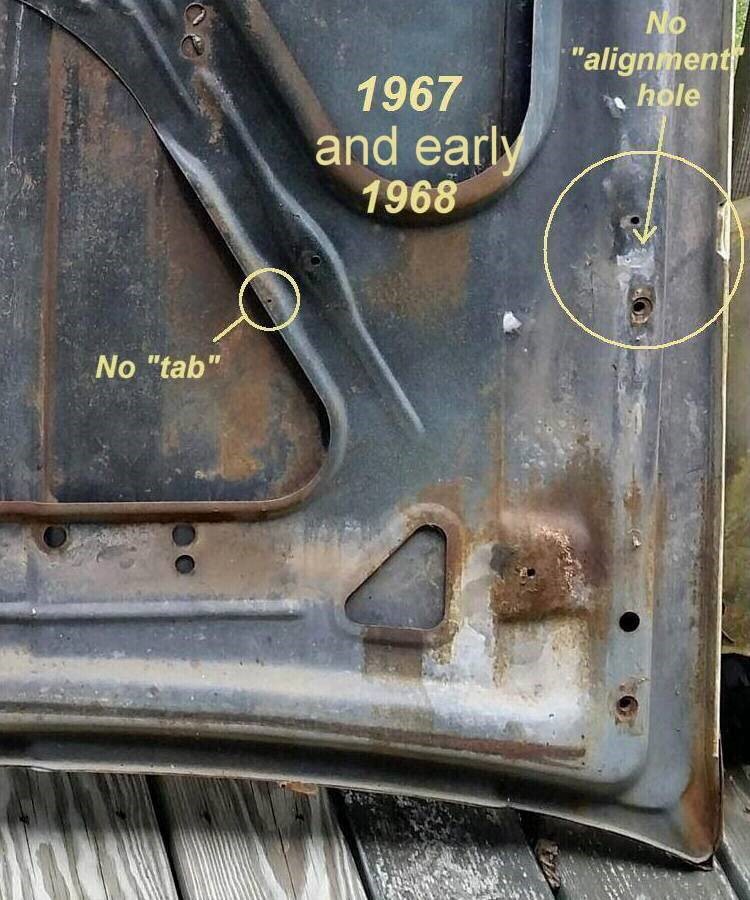
|
|
69 hood with "tab" and alignment hole.
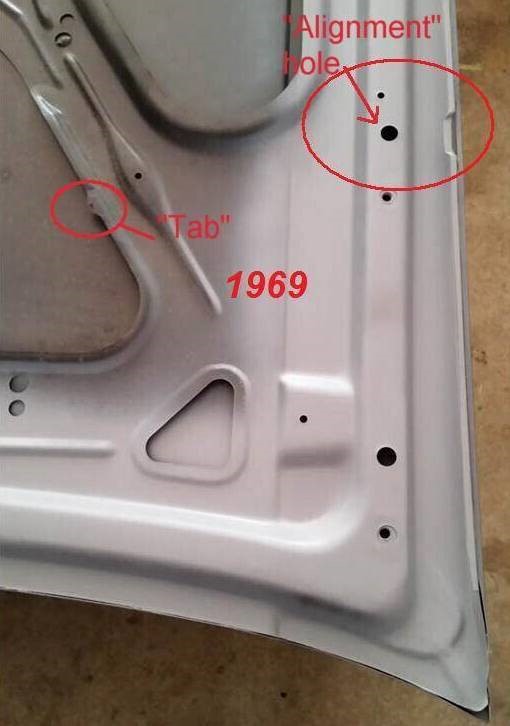
|
|
The SS hood is significantly heavier than the flat hood. The difference is in the top structure
and the hood ornaments. Because of the weight difference, different springs were used to assist
in lifting the SS hood. More information on
hood springs is here.
RPO ZL2, Special Ducted Hoods
In late 1968, the special ducted hood,
aka the cowl hood, was released. In 1969 advertising, it was called the "Super Scoop" hood.
RPO ZL2, part number 3949708, was a mandatory option for the Z11
Indy Pace Car replicas and Z10 coupes. It became available as an option on 1969 SS and Z28
cars in December 1968. Only 10,026 cars were ordered with the cowl hood. With the Z10 and Z11
production totalling about 4,100 cars, that left only about 5,900 SS and Z28 having the ZL2
hood from the factory.
Note that the hood was included with COPO 9560 (ZL1) and COPO 9561 (L72) and thus those 1066 cars are
not included in the RPO totals.
1969 special ducted "cowl" hood.
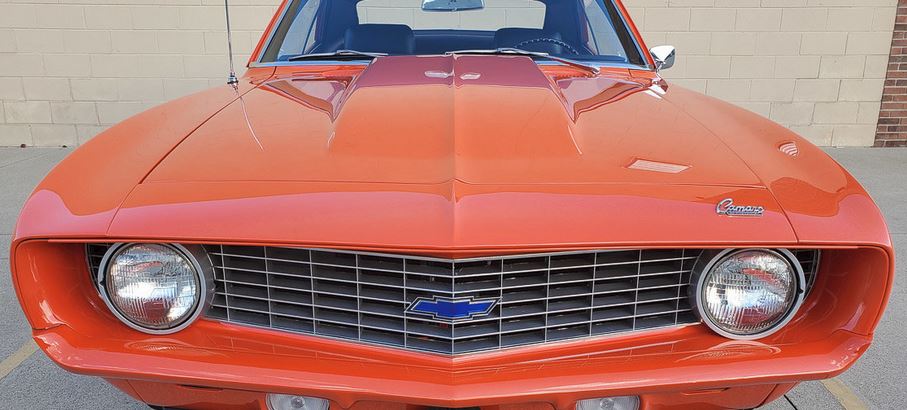
|
|
Late 1969 cowl hood underside.
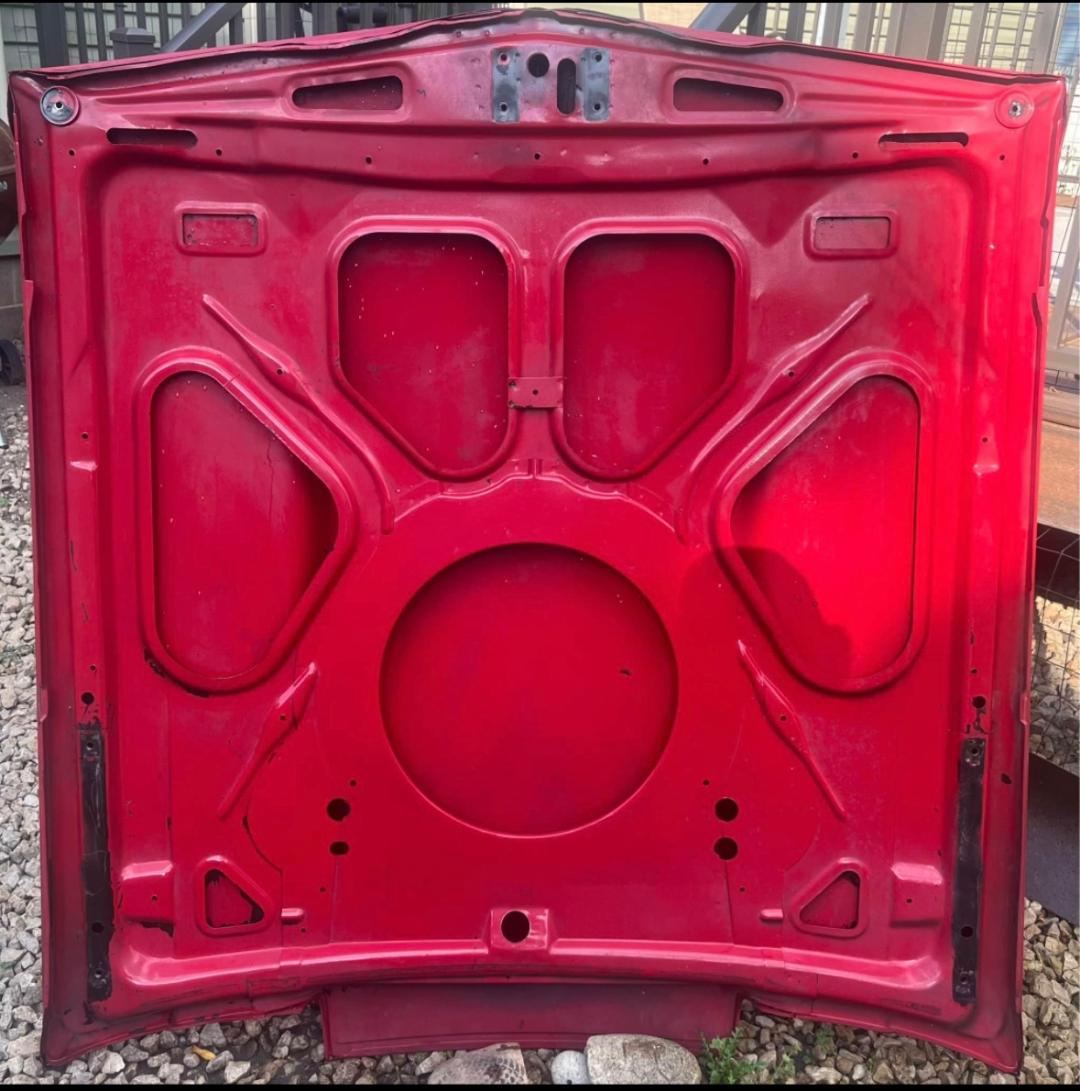
|
|
The 1st design ducted hood would flex and bend at the top front where the plenum begins.
Stiffening pyramids were added to the front part of the inner structure around April 1969,
and this solved the problem. This was not visually apparent, as the hoods had hood pads
covering the area. There does not seem to have been a part change number for this inner
structure change.
First design cowl hood.
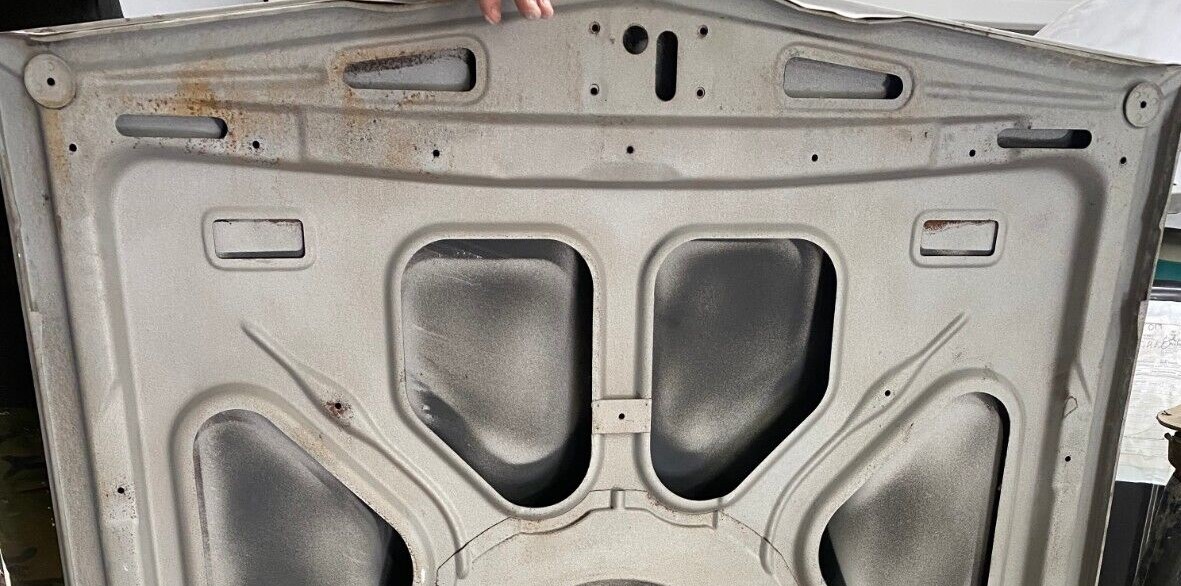
|
|
Second design cowl hood.
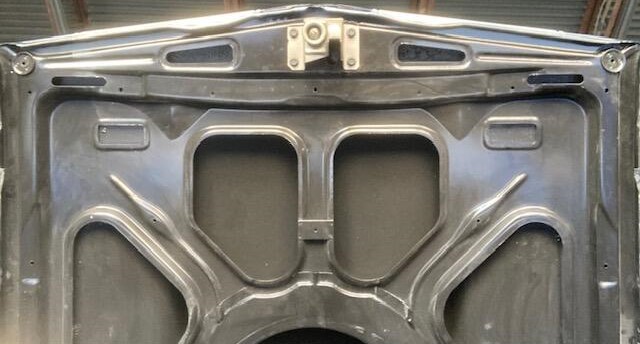
|
|
Two special ducted hoods were available as service parts for the 2x4 "cross ram" carb setup
which was used in Trans-Am racing. The fiberglass hood assembly is part number 3963832.
The steel hood assembly is part number 3965728. Neither of these hoods are assembly line parts.
GM parts book fiberglass cross ram hood assembly.
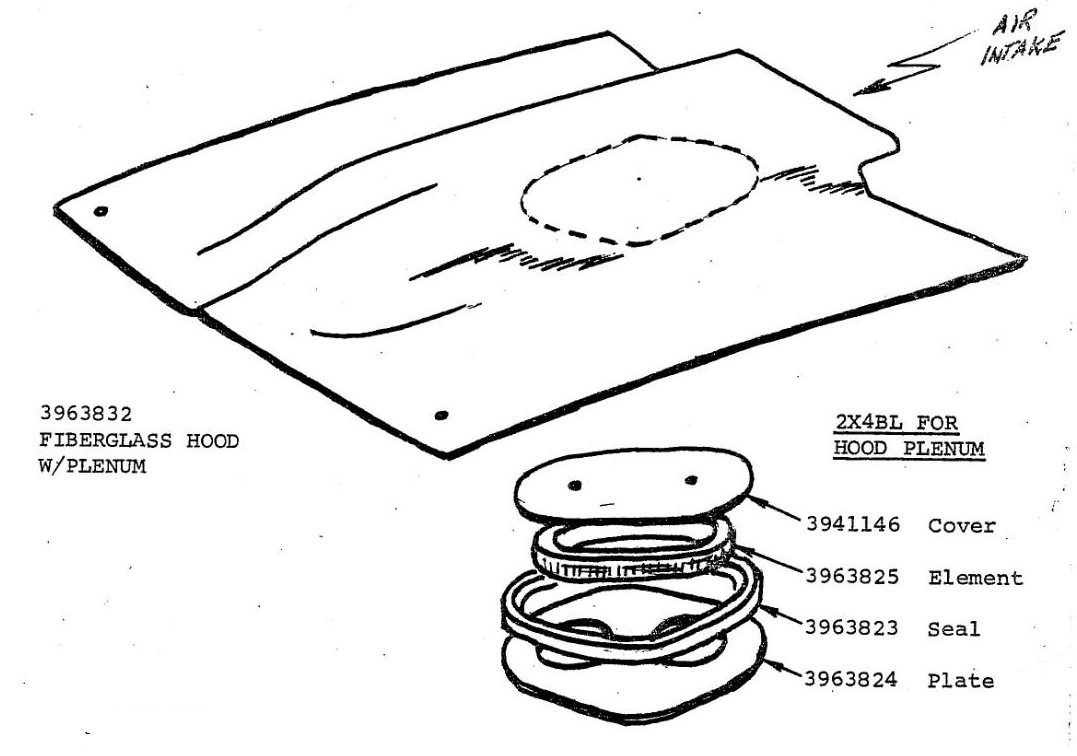
|
|
GM cross ram steel cowl hood.
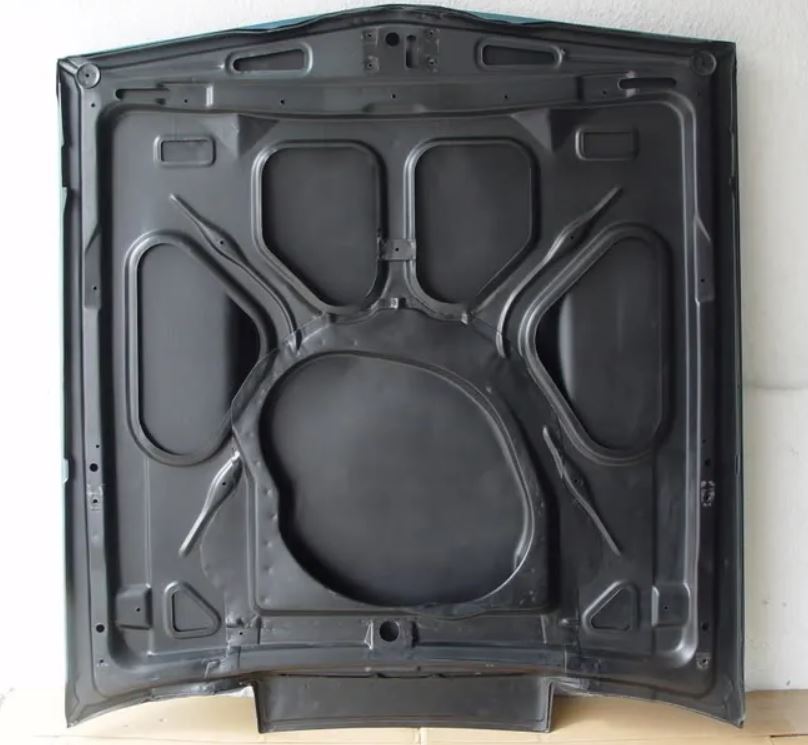
|
|
SS Hood Louvers
1967
For 1967, "finned" type louvers were used on Camaro SS hoods. These were designed to
simulate oil cooler type fins. Part number 3902899 (casting number 3898132) was
the first design used on the SS350 cars. This louver had 19 fins and had the outer
fins cut off at a 90 degree angle.
Finned type louvers.
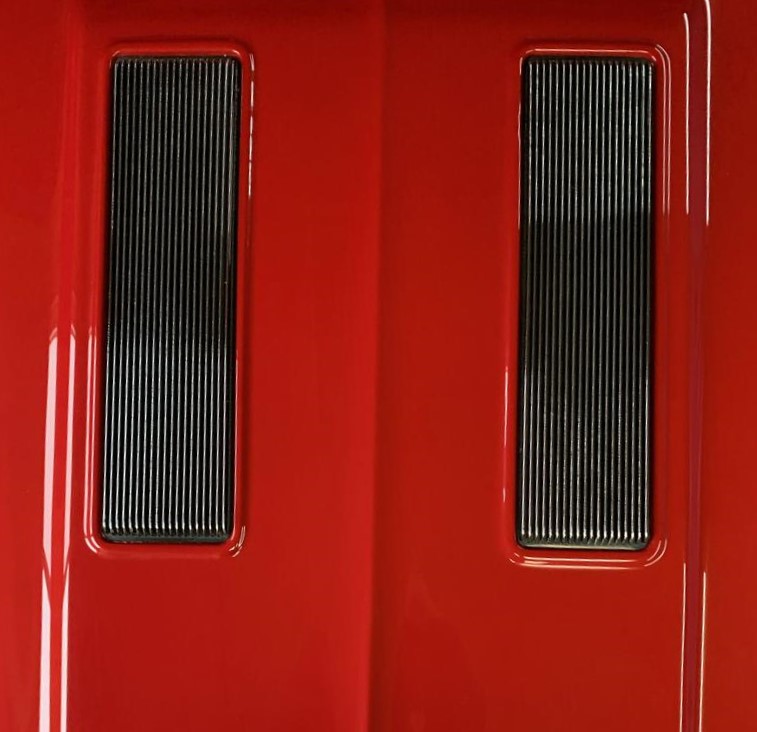
|
|
First design finned louver.
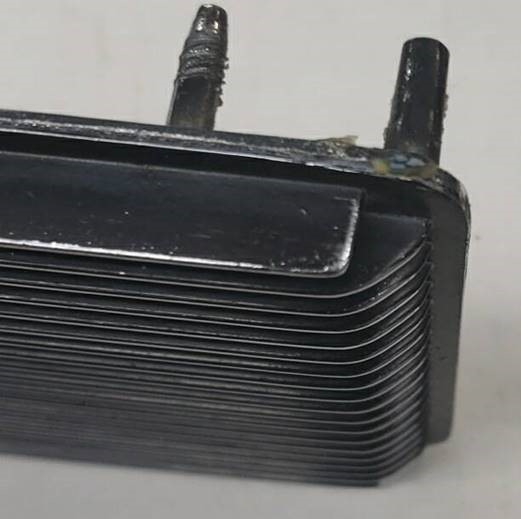
|
|
Second design finned louver.
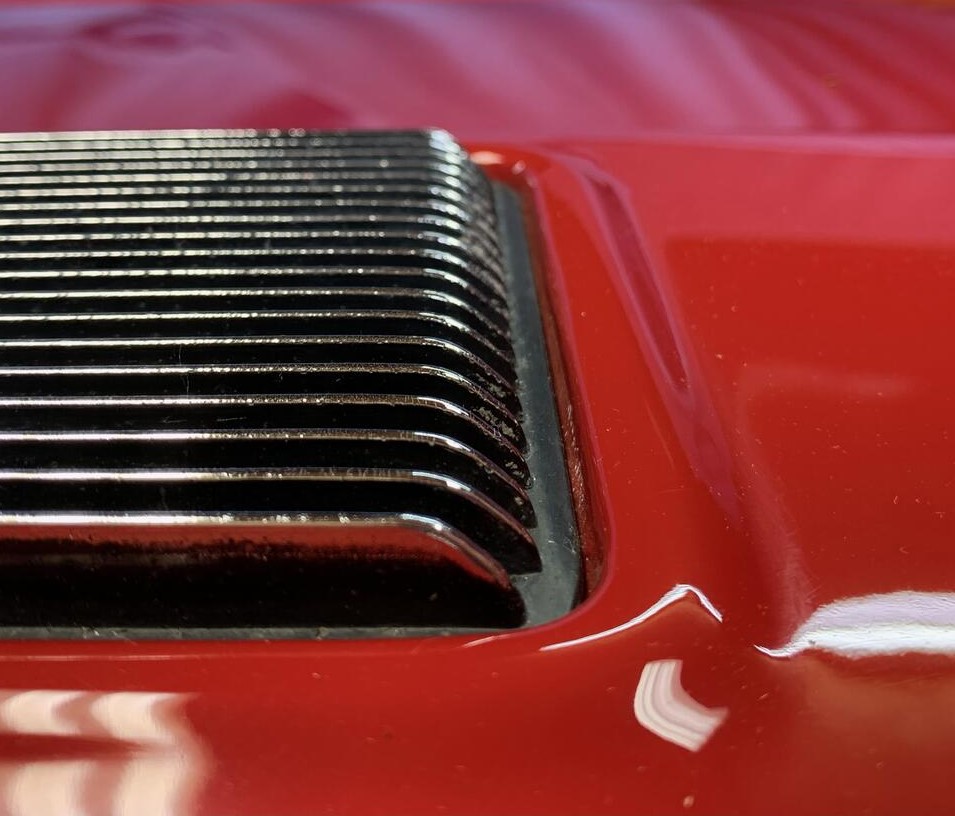
|
|
The louver was redesigned slightly, still having 19 fins, but the outer fins were cut off at about
a 45 degree angle. The new design was part number 3918764 (casting number 3914781). The revised
louver was used for later SS350's and all 1967 SS396's.
It is believed that this revised part superseded 3902899 in production sometime in early
to mid-December, 1966, though the part number history shows the paperwork was completed
in April 1967. The louver has a very slight bow to it from front to
back, following the contour of the Camaro hood. If inverted on a flat surface, this louver
will slightly rock fore and aft. Although discontinued in February, 1969, these louvers
are available in reproduction.
Bowed structure of finned louver.
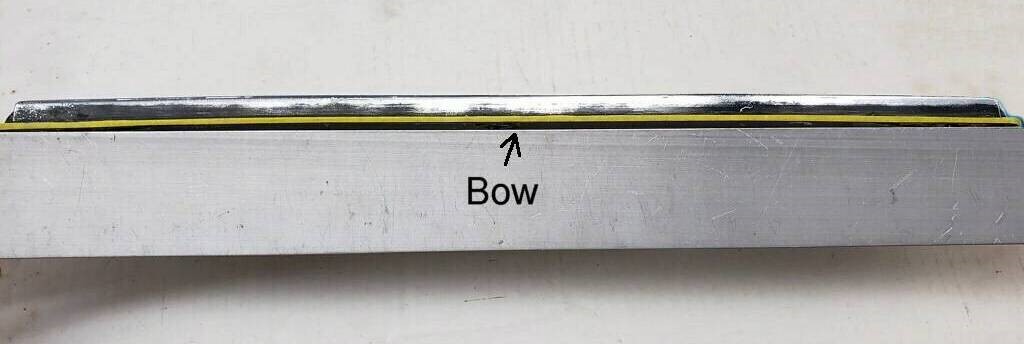
|
|
1968
For 1968, there was a new "stacks" (or "ice cube tray") type hood louvers that
imitated velocity stacks, but only the SS396 cars used this design at first.
The second design 1967 "finned" louver continued to be used on the 1968
SS350 through October of 1967. After that, the "stacks" type louvers
were used on both the SS350 and SS396 cars.
The stacks louvers are flash chrome with semi-gloss black accents around the inner edges.
Part number 3927469 was used on the left side (casting number
27043) and part number 3927470 was used on the right side (casting number 27042).
1968-1969 stacks louver.

|
Drain hole for stacks louver.
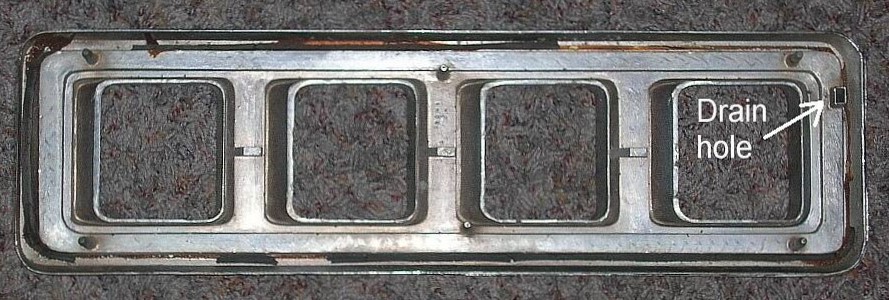
|
|
Stacks hood louvers.
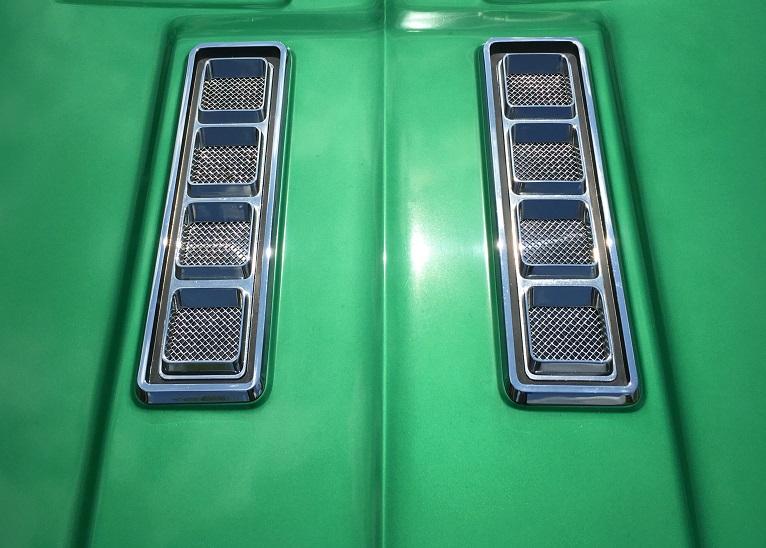
|
|
As shown in the Camaro Factory Assembly Instruction Manual (AIM) drawings below, the assembly consists
of the louvers themselves, plus a wire mesh screen underneath (part number 3927468), a foam
rubber seal (part number 3898146) and a flat black panel under that (part number 3927471 left,
and 3927472 right). A rectangular drain (see arrow below) was cast into the stacks so
water would escape through the drain tubes (3903974).
1967 AIM drawing of "finned" type louvers.
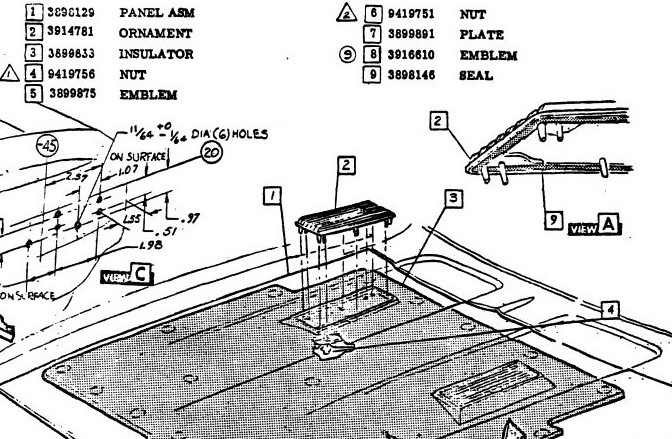
|
|
1969 AIM drawing of "stacks" type louvers.
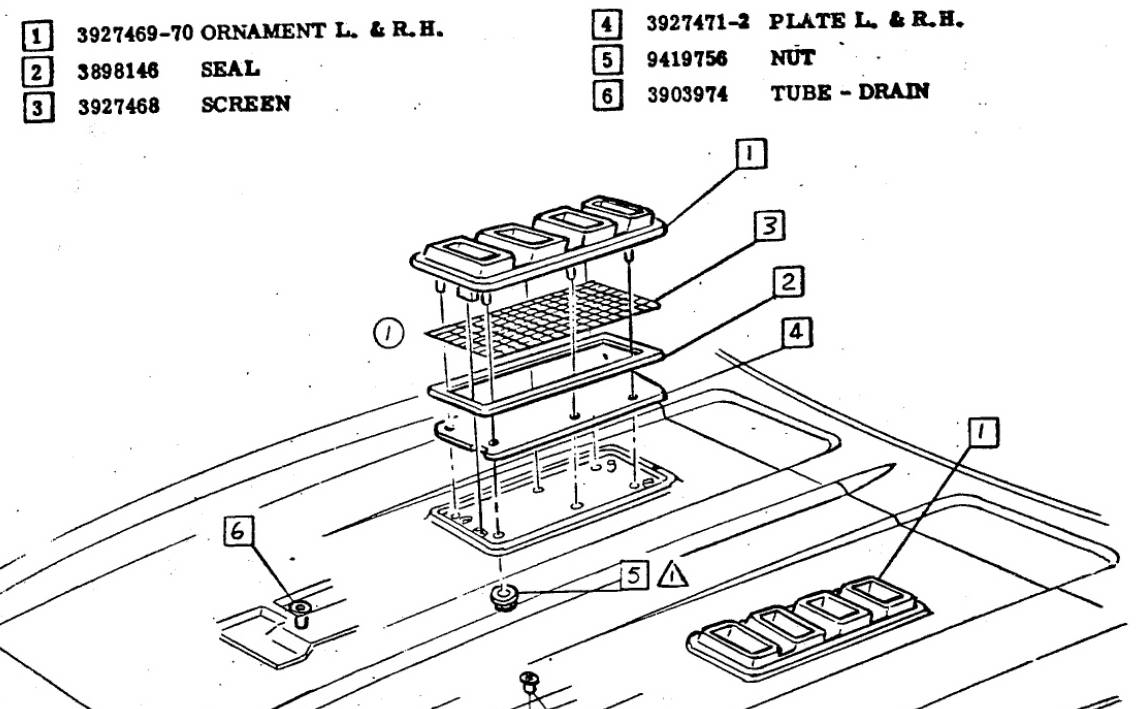
|
|
1969
Early 1969 SS Camaros received the 3927469 and 3927470 "stacks" louvers, the same as the
1968 part numbers. In January of 1969, they were replaced by part numbers 3930909 (left)
and 3930910 (right). It appears this was a
part number change only as the casting numbers are the same as the 3927469 (casting
number 27043) and 3927470 (casting number 27042) louvers, and the two versions of the
stacks appear to be identical.
Service Parts
Finned louvers were also used on the 1968-1972 Nova SS cars. These were part number 3927442
(casting number the same). Like the second design Camaro finned louvers, these also had
19 fins. But to fit the almost flat surface of the Nova hood, there was no “bow” in
them, If inverted and placed on a flat surface, they will not “rock” fore and aft like
the Camaro finned louvers do. However, they do have a slight “curve” to them side to side.
The Nova also used a decorative chrome bezel, part number 3927443, under the louver (not shown). Beginning in February, 1969, the 3927442 louver was also used for service
on the 1967 SS and early 1968 SS350 Camaros - causing installation problems. If using
the flat 3927442 louvers on a Camaro, the possibility exists of breaking the front and/or
back studs when trying to tighten them down. Note that this louver was discontinued by GM
in the early 1990s, but is currently available in reproduction.
NOS 1968-1972 Nova finned louvers.
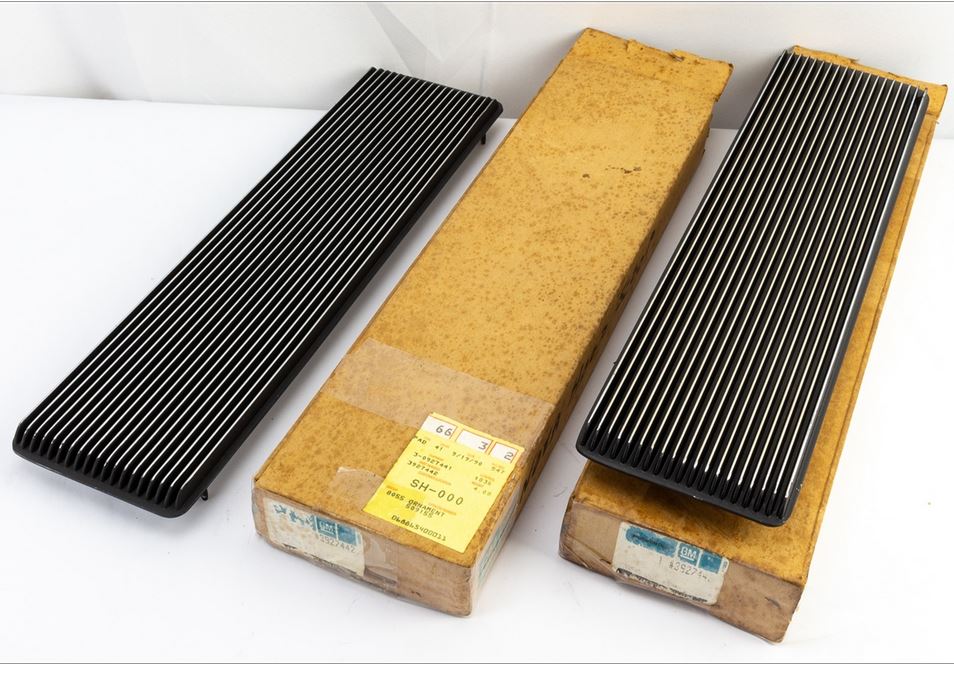
|
|
NOS "stacks" louvers.
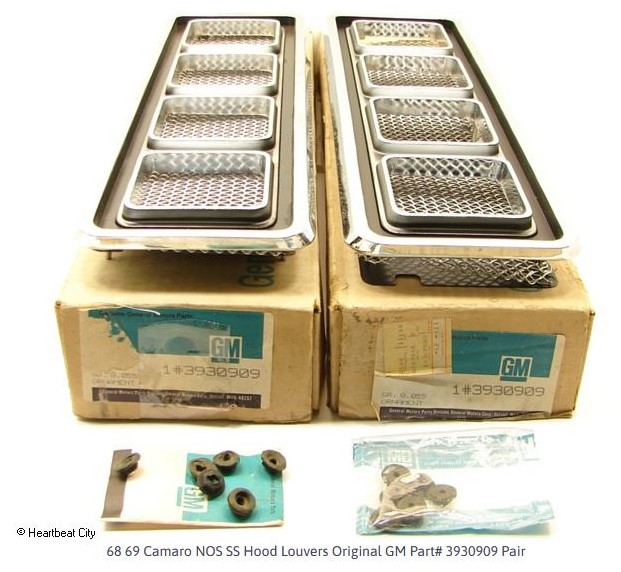
|
|
The 68 and early 69 "stacks" louvers were replaced by 3930909 (left) and 3930910
(right) in January of 1969, and were available as service parts until May of 1972.
At that point, the 3930310 was discontinued and only the 3930909 was available with
the instructions: "Dealer will be required to drill 2 holes 0.3125" when using in place
of 3930310". Note that the 3930909 was finally discontinued in November of 1990. The
“stacks” louvers are available in reproduction.
Hood Dates
There are several ways to indentify and original hood from a reproduction, but the easiest
is that most originals will have a date code stamped on the driver side rear corner. This will
be a "week" format. Picture below shows week 44 but the second 4 is mostly missing. This picture
also shows that the rear edge of an original hood is different than a reproduction hood.
Hood date stamp.
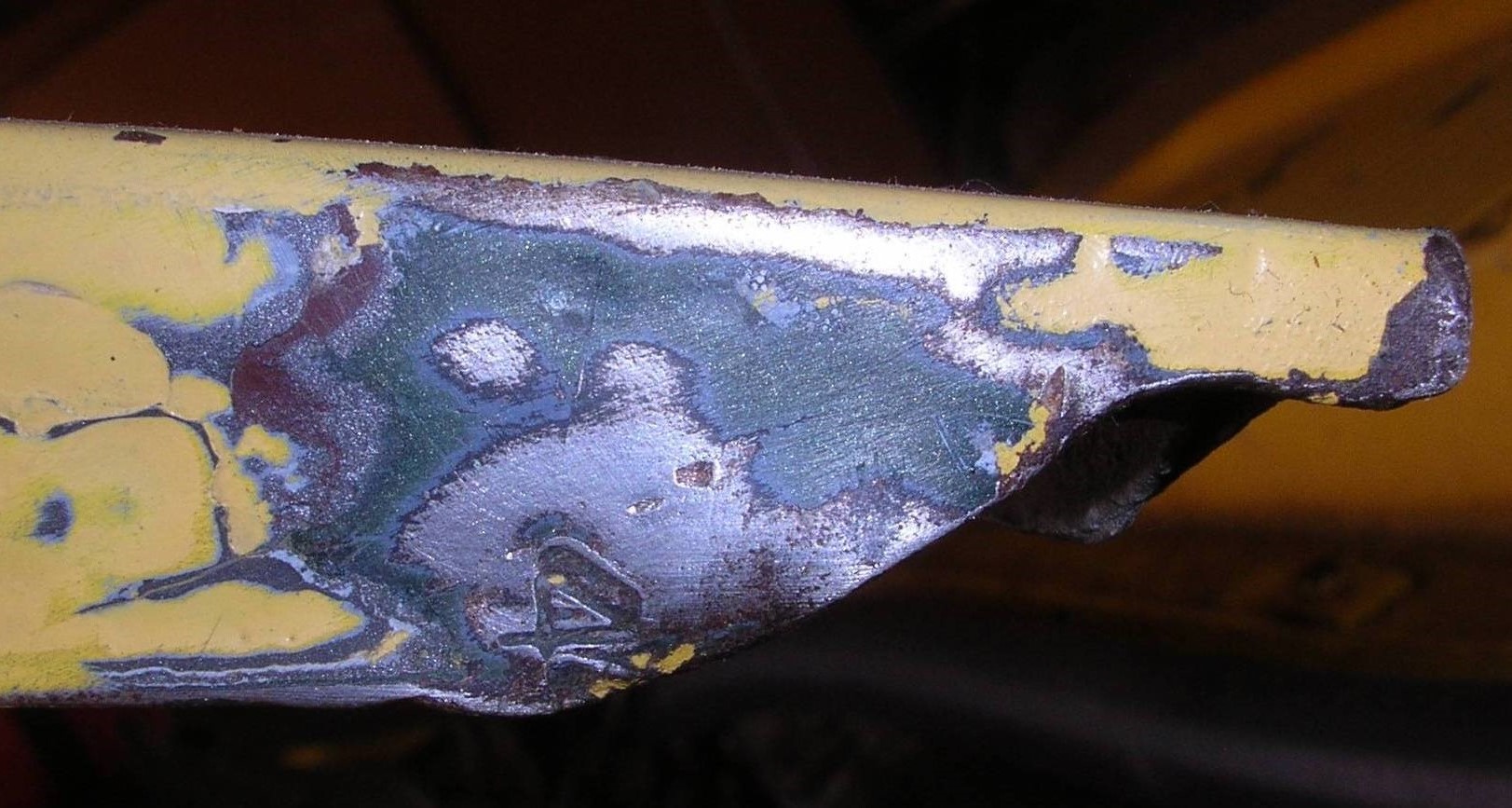
|
|
Reproduction hood rear.
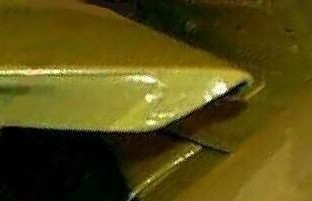
|
|
Underhood insulation and clips
An underhood insulation pad was standard on the SS and ZL2 hoods.
It was also included with deluxe interior as part of RPO Z87. The pads have indents
molded into them for clearance.
1967 insulation for flat hood - 3898152. SS insulation was 3899833. Parts book July 1967, cost $3.95
1968 insulation for flat hood - 3898152. SS insulation was 3938621, which superceded part number 3919106.
1969 insulation for flat hood - 3938631. SS insulation was 3938621.
For the ZL2 hood, the insulation pad was part number 3949716.
Hood pad clips were used to retain the underhood insulation pad. These were part number
3909199 and were used for all three years. The part number (and design) changed to
3977775 in November 1974.
Molded structure of hood pad.
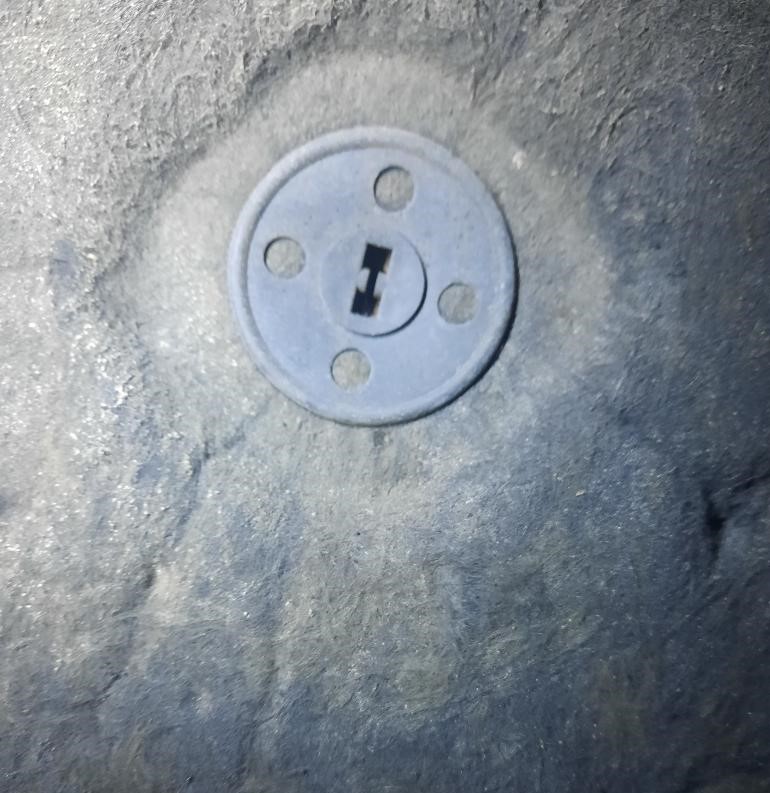
|
|
Reproduction hood clip.
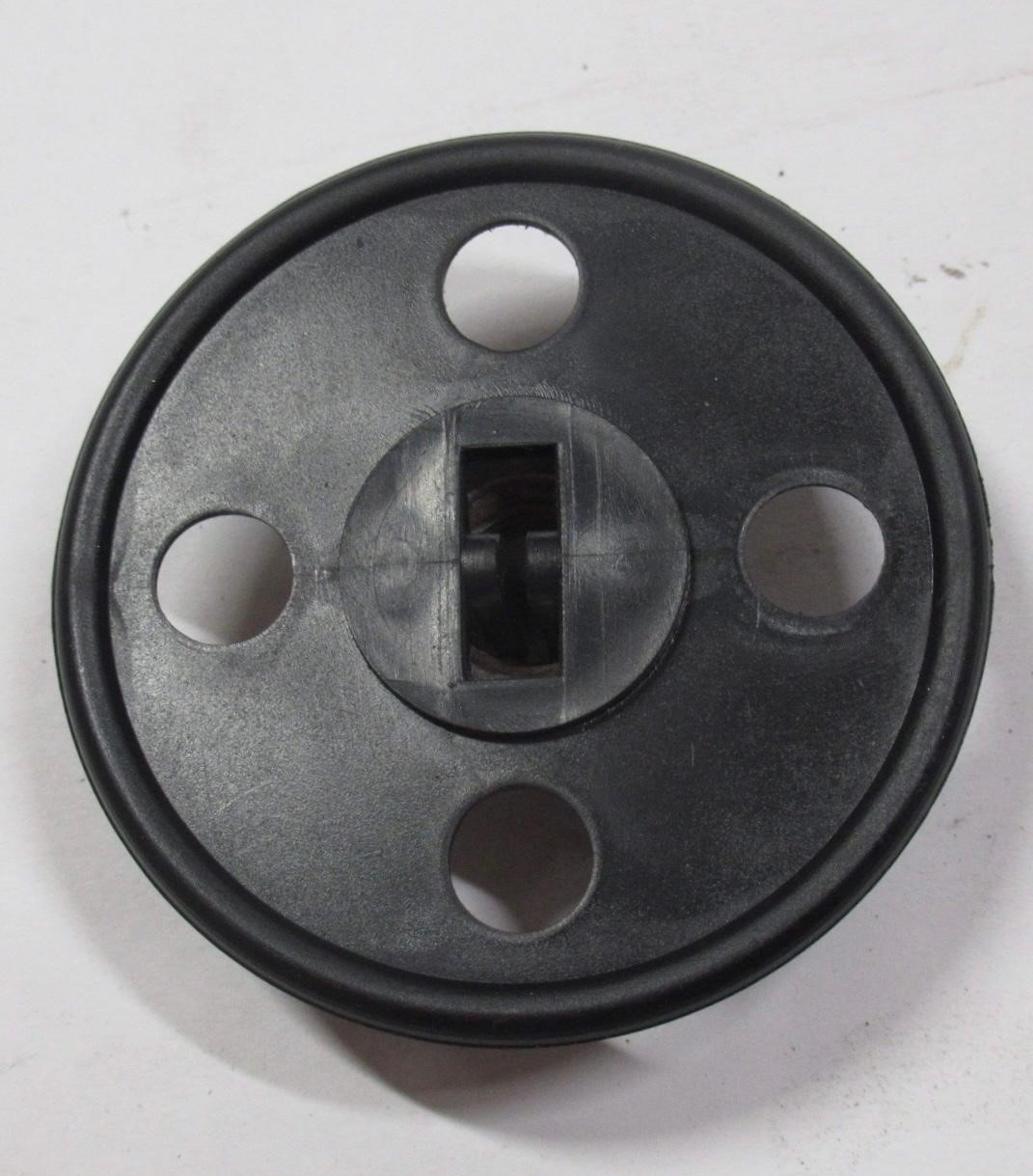
|
|
Original hood clip.
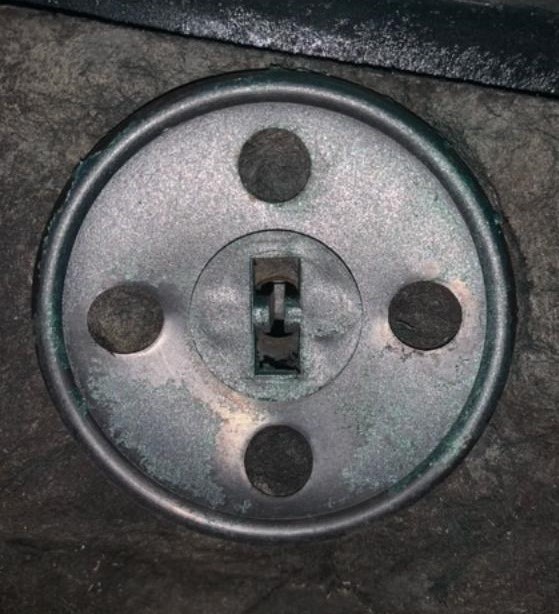
|
|
Some reproduction clips are not correct visually and some fall out when you install
them because part that pushes into the hole is the wrong diameter.
Reproduction clip (left) and original clip (right).
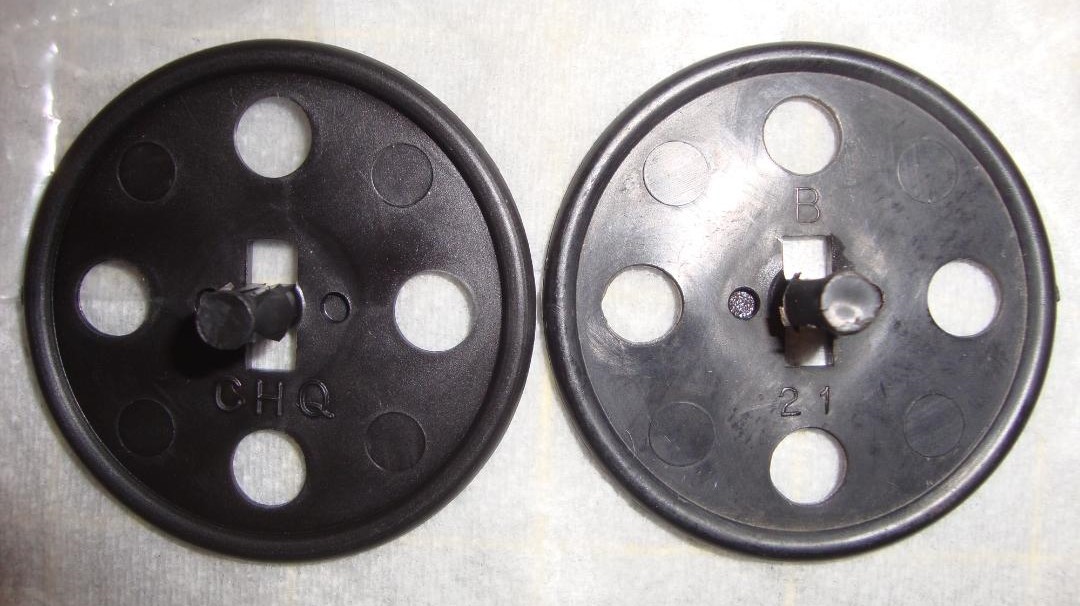
|
|
Second design clip (reproduction).
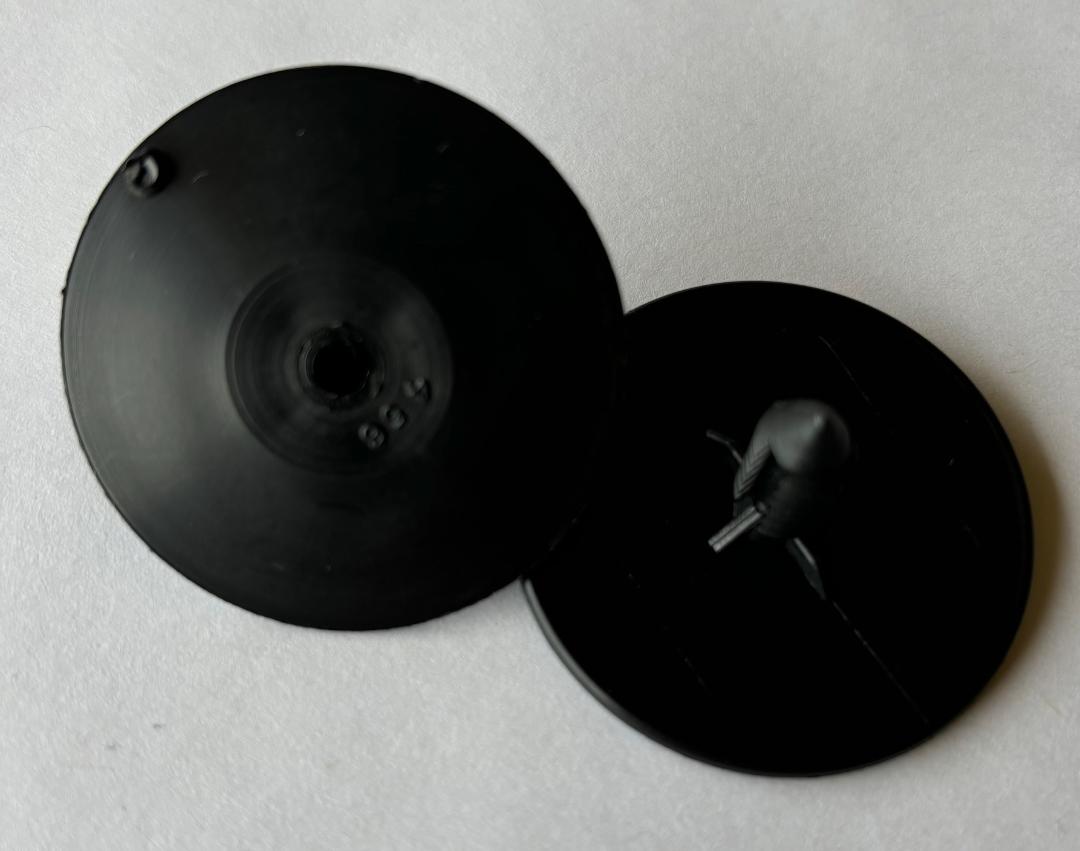
|
|
Underhood lamp
An underhood lamp option was available all three years. Part number 3903402 was the lamp assembly
used for 1967, ordered either as RPO U26 or as part of the ZJ9 auxiliary lighting group. An image
from the 1967 Camaro AIM is below. For 1967, in line six cylinder (L6) cars had the light on the
passenger side and small block (SBC) cars had the light on the drivers side. The AIM shows all
V8 cars having the light on the drivers side. But the light was supposed to illuminate the engine oil
dipstick area, which is on the passenger side for big block (BBC) engines. It is not clear
if all 1967 big block (BBC) cars had the light on the drivers side. Research is ongoing to
see if the location may have changed during the model year.
The wiring end of the 1967 light pointed toward the front of the car with the hood closed. The light
was operated by a mercury switch, which turned it on when the hood was open. The service part number
for the light as of November 1967 was 987028.
1967 AIM showing lamp locations.
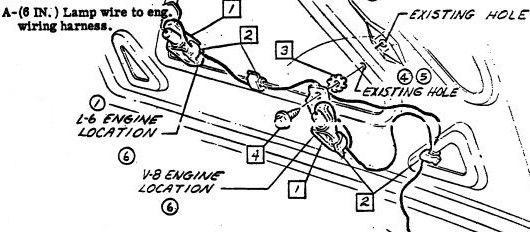
|
|
1967 underhood lamp, V8 location.
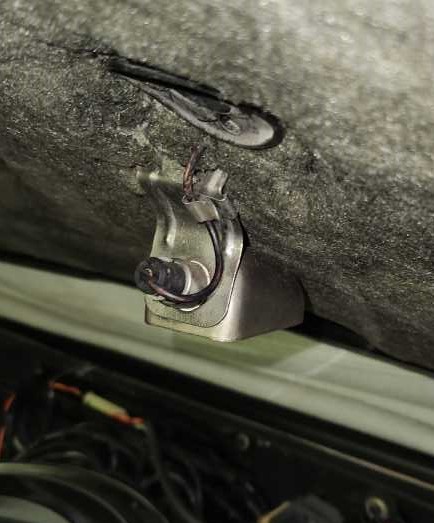
|
|
For 1968 and 1969, lamp part number 3916764 was used. The lamp was ordered as part of
RPO ZJ9 auxiliary lighting group. There were two locations for this light, which
depended on the location of the dipstick. L6 and BBC cars had the light on the passenger
side, while SBC cars had the light on the drivers side. The wiring end of the light was
changed so that it pointed toward the rear of the car with the hood closed. The service
part number in November 1967 was 987225, but this part number was removed from service
in November 1968. The part number for the 1969 light was 993553 as of February 1969.
A rubber grommet was used with the light. The grommet was part number 3733225 for all three years.
1969 AIM showing lamp locations.
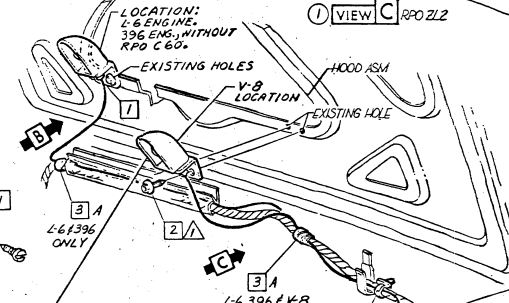
|
|
1968-69 underhood lamp, SBC location.
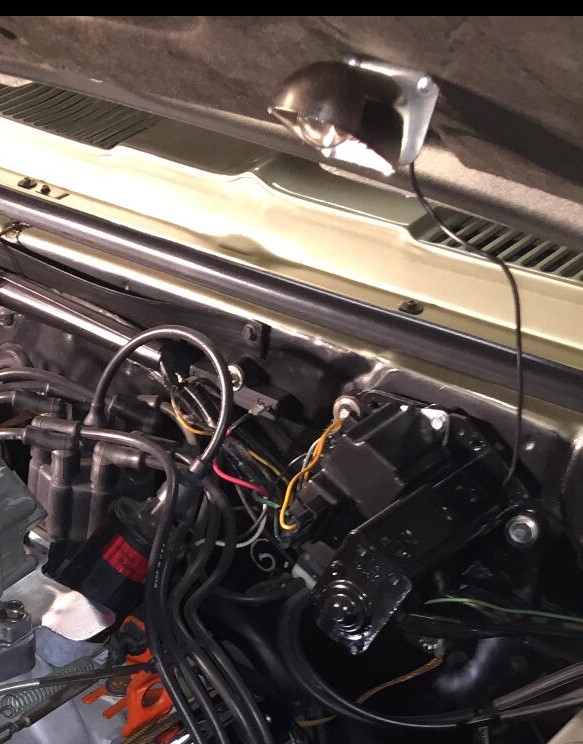
|
|
1968-69 Underhood lamp box, service replacement.
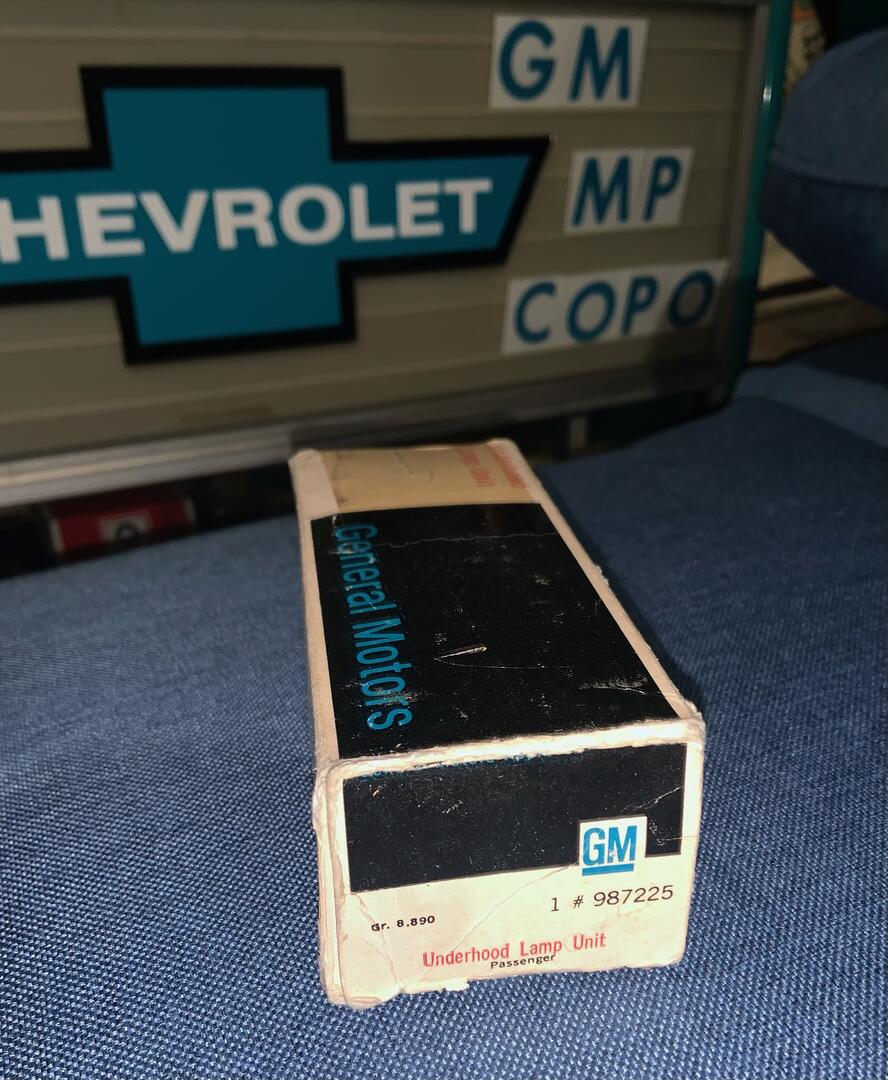
|
|
For 1967, a round perforated hole had to be made in the hood pad for the screw (part number 9420508)
to be installed. For 1968 and 1969, a square perforated hole had to be removed for the
screws (part number 9415191) to be installed.
|
|
1967 underhood lamp location with pad.
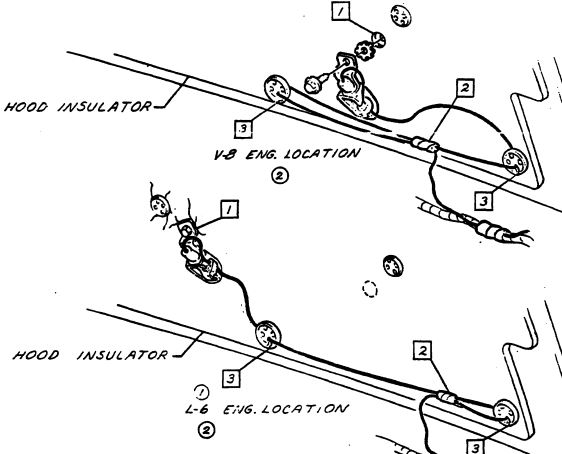
|
|
1969 AIM showing lamp with hood pad.
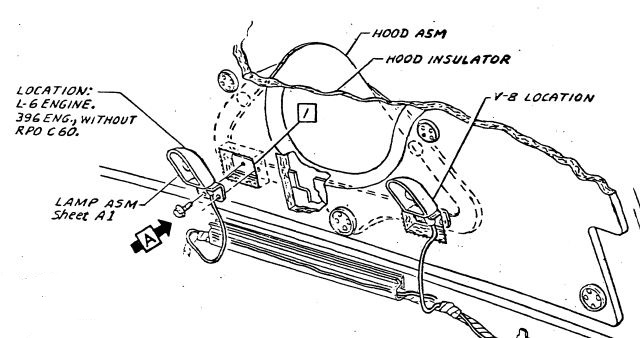
|
|
For cars with option C60, air conditioning, the light was moved inward 4 inches for
clearance of the AC box. If a car in 1969 had option ZL2, special ducted hood, then
2 holes had to be drilled in the hood for the light to be installed.
1969 underhood lamp location with C60.
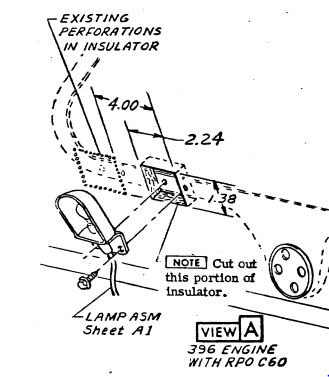
|
|
1969 hood lamp location with ZL2.
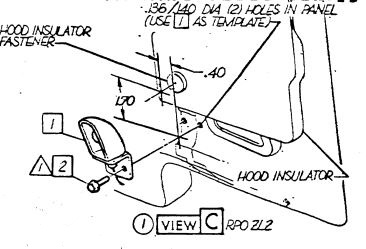
|
|
Other Associated Parts
There was a rubber insert that was installed on the underside of 68 and 69 SS hoods that served as
an extension for the metal drain tubes. These were part number 3903974 for the simulated
stacks used in 1968 and 1969.
Rubber hood drain tube extension.
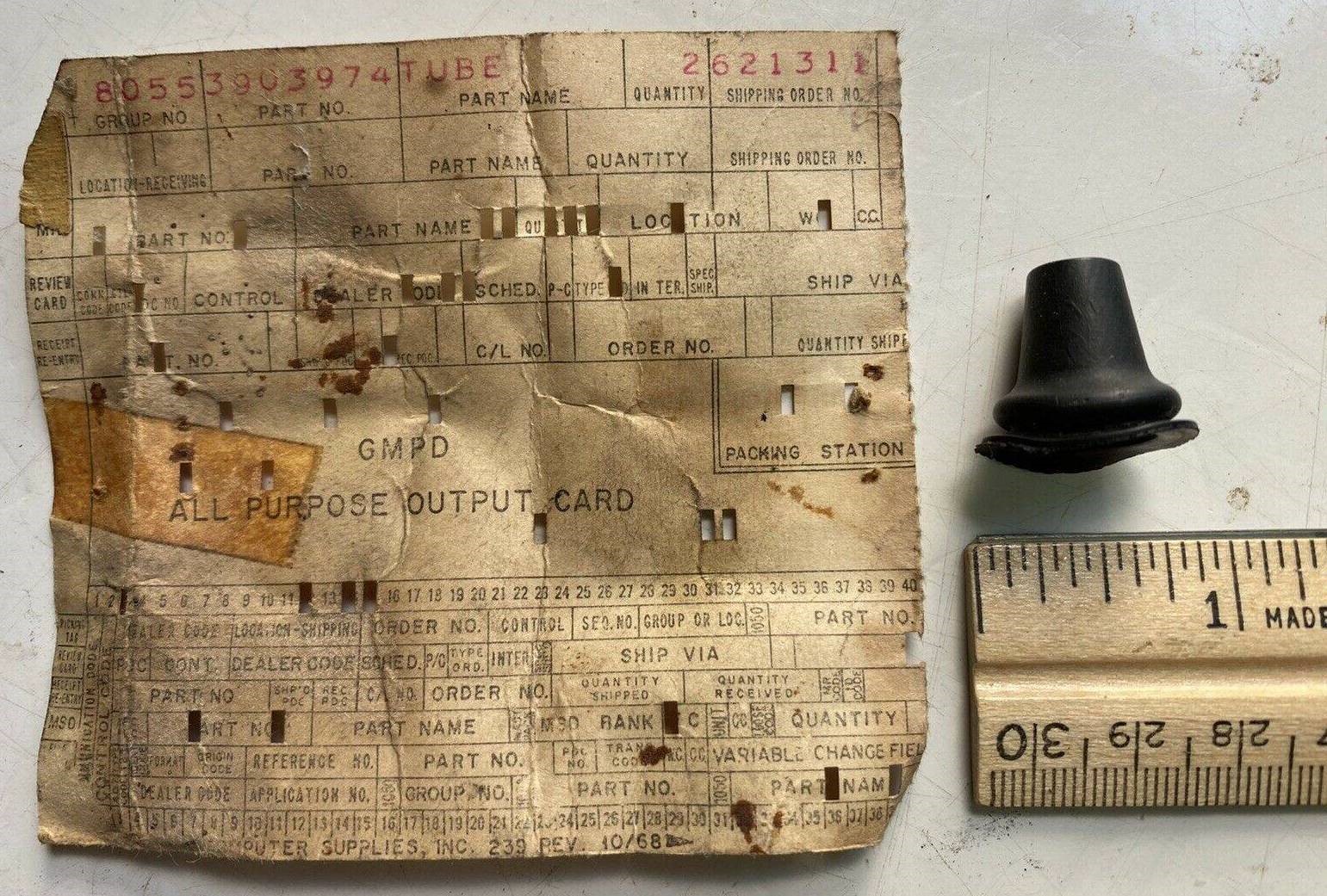
|
The rubber hood bumpers, attached to the inner lip of the fender, changed over time. For 1967,
the side bumpers were 3891690 which changed to part number 3916019. These had an arrow
shape in the push-in portion of the bumper. Side bumpers for 1968 and 1969 were 3919126 and
these were a slide-in type. The slots for the bumpers in the fender for 1967 are different
than in 1968 and 1969.
Hood side bumper from 1969 AIM.
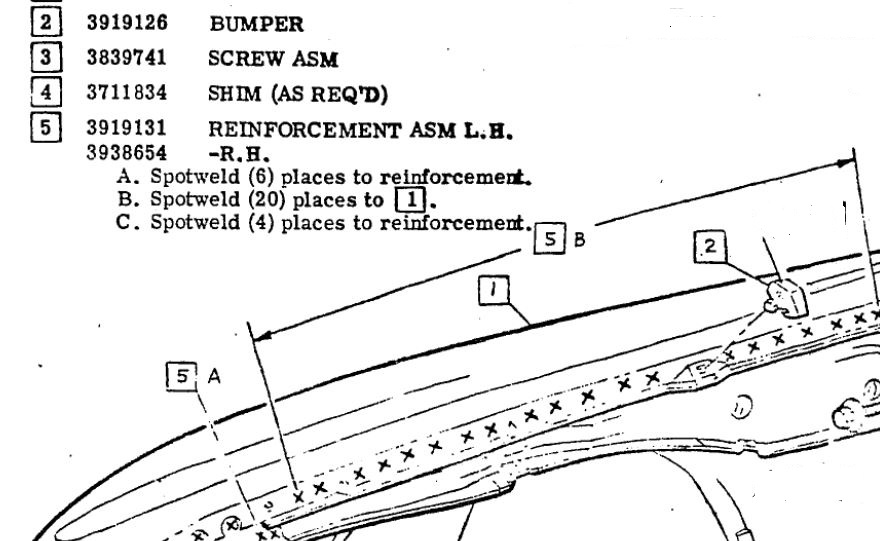
|
|
1967 hood side bumper.
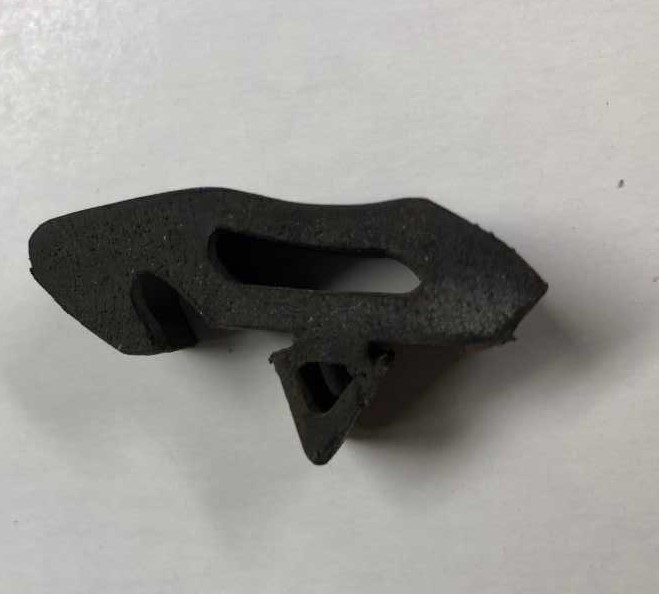
|
|
NOS hood side bumper 68/69.
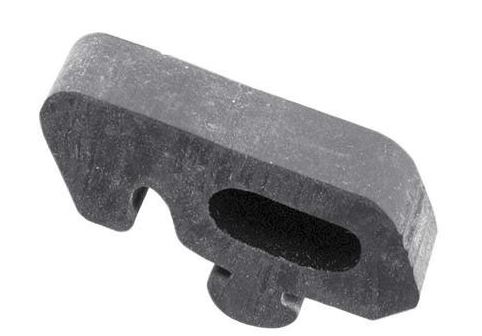
|
|
The front rubber hood bumpers (sometimes called hood stops) are located toward
the outer end of the core support on the top part of a bolt that screws into the
core support and is locked in place with a nut. The part number for all three
years was 3792828.
Front hood bumper from 1969 AIM.
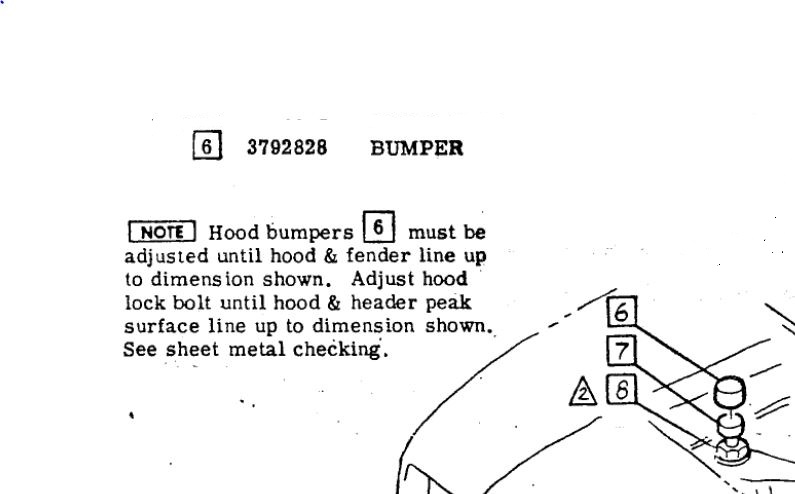
|
|
Front hood bumper / hood stop.
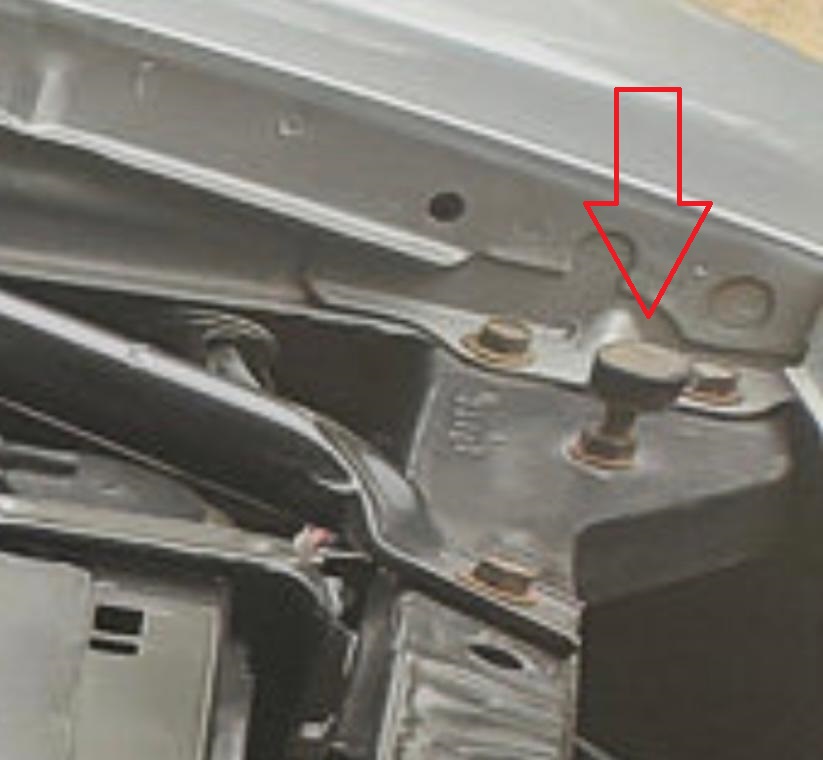
|
|
Acknowledgements
Ed and Troy spent a lot of time researching the details for this report. Many other CRG members
contributed to the final product. If you have information to contribute on the topic, we would
like to hear from you.


